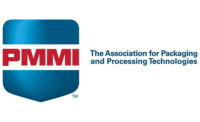How consumer brands can navigate packaging for e-commerce
COVID-19 pandemic causes consumers to rely on e-commerce, requiring manufacturers and brand owners to adapt.

Prior to the global pandemic, online sales in the United States were growing at 15 percent a year, and 62 percent of consumers purchased a product online and picked it up instore in 2019 according to PMMI’s report, “Omnichannel Retail: Operating Harmoniously in an Integrated, Digitally Enabled Supply Chain.”
Now, COVID-19 has lit a fire under brands to punch up their online sales strategy. As of July, total U.S. online sales reached $73.2 billion, up 76.2 percent year-over-year – even as spending slows, according to recent insights from Adobe Analytics.
With the pandemic shutting retailer doors and changing the world as we know it, CPGs must adapt to a retail environment far more dependent on online consumption. This may mean major changes to packaging – not only to endure the challenges of the e-commerce supply chain but also to meet some of the new hurdles posed by COVID-19, such as the application of caustic cleaning products.
As the industry begins to progress in this direction, packaging industry professionals weigh in with key considerations.
Balancing durability, sustainability and “wow factor” in a new normal
Lisa Pruett, president of RRD Packaging Solutions
The full impact of COVID-19 on future brand strategies still remains to be seen. Even as restrictions loosen and consumers return to retail shops, many are still minimizing their time in public and following social distancing guidelines. These conditions continue to fuel the growth of e-commerce and demonstrate how necessary it is for companies to adapt in order to not only survive but thrive in the “new normal.”
A study conducted by Arlington Research and PFSweb’s operations business unit shows that 45 percent of consumers who shopped via a new website during the pandemic will continue to shop using that site following a positive experience. This means more success for companies that demonstrate proficiency with the online ordering experience — and lost opportunities, bad reviews and greater competition for those that fall short. The good news is that e-commerce provides excellent opportunities for personalization, customization and customer engagement so consumers can better connect with brands they love, and brands can better serve consumers.
For companies leaning into sustainability, e-commerce brings another opportunity to support a brand’s promise. Right-sizing, redesigning and reinforcing packaging to minimize space and material while resisting damage from other, heavier items during transit ensures waste reduction — and subsequently, cost.
Since Amazon put into place initiatives to minimize handling at its distribution centers, Ships In Own Container (SIOC) packaging has become more prominent as well. For the brands that take this road, it’s even more important to consider materials, coatings and structure carefully to maximize packaging resilience and minimize damage that could erode trust in the brand.
Additionally, a “gift box” presentation can wow shoppers and build loyalty. Using well-appointed brand experience kits containing premium materials, marketing literature and even freebies, companies can effectively reward returning customers, deliver goods to regular subscribers, or simply offer a unboxing experience worthy of Instagram that yields positive exposure to new audiences.
Design for ease of transportation
Jonathan Quinn, e-commerce packaging market manager, Nova Chemicals
E-commerce is challenging products and packaging in ways we never thought possible, and there is still a long way to go on the journey to optimizing both primary and secondary packaging.
With COVID-19 accelerating the move to e-commerce purchasing, it’s more urgent than ever to address these packaging challenges. Traditionally, packaging has been designed to stay vertically oriented and to be transported next to more of the same product. For example, a standup pouch of pet treats would go into a box with six or 12 of the same packages and then would be put on a pallet sent to the traditional retail store and then put on the shelf vertically. Today, much of that has gone out the window.
The process is the same until the product reaches the distributor, or “e-tailer,” at which point that pallet of pet treats gets broken down and the pouches are stored in racking. When an order comes in the product gets picked and placed in a box with any number and type of products. This creates a scenario where you must design that pouch to be placed in a box with a soft drink, a bowling ball, and a bag of apples. The e-commerce segment has grown so rapidly that package formats and specifications have not had a chance to catch up and optimize for the new challenges.
However, when the stakes are higher than ever, there are plenty of points to consider:
- Right-sizing. This is mission critical for several reasons: sustainability, cost and product protection. We’re all familiar with ordering the latest phone case and receiving it in a box that could fit a coffee maker. Box rage is real. And this is also about primary packaging. Many products packages must be rethought and re-sized for optimization throughout the e-commerce supply chain.
- Ease of opening. Currently, a lot of flexible packaging within e-commerce is difficult to open and doesn’t perform as it was designed to. Consider protein packaging. As it stands today it can practically require an ice pick and chisel to get to the product. This showcases the toughness and seal integrity of the package to survive the rigors of handling as well as the freeze-thaw process. But all the consumer sees is the difficulty getting into those products. It’s a challenge to deliver film strength and toughness along with seal integrity alongside easy-to-open, peelable seals.
- Package failure. There has to be a balance between package integrity and ease of opening. Ensuring the latter can lead to damaged goods if the right balance of performance properties isn’t achieved and the package fails in transit or in the consumer’s home.
As a result, Nova has focused on developing a portfolio of resins optimized for the rigors of e-commerce, protecting against moisture, leakage, scuffing and scratching — and ensuring recyclability and high performance amid the downgauging of material. This helps brands support sustainability while still prioritizing performance and customer safety.
Agility and simplification rule
Jorge Izquierdo, v.p., market development, PMMI, The Association for Packaging and Processing Technologies
To say flexibility is a priority is an understatement. Today’s product lifespan is shorter, with tightened production cycles and an increasing number of SKUs. Online reviewers can catapult a product to instant success — or failure. Agility and responsiveness to consumer demands can make a brand stand out and drive loyalty.
However, these changes can complicate packaging decisions, motivating brands to simplify wherever they can. PMMI’s report, “E-Commerce: Think Inside the Box,” noted that 25 percent of CPGs said they committed to designing e-commerce-specific packaging and many planned to eliminate secondary packaging altogether.
This approach requires primary packaging to withstand the rigors of shipping via multiple channels — and be strong enough to be reused for shipping back to the manufacturer if necessary. Amid right sizing and revisions to materials for greater durability, all of these adjustments must still meet consumer expectations for a fulfilling “unboxing” experience.
Simplification amid e-commerce can take other forms as well. Manufacturers are barely able to keep up with consumer expectations for next-day delivery, let alone meet pressures for same-day or even next-hour delivery. As a result, they increasingly rely on partners to help fulfill e-commerce demand.
PMMI’s report acknowledges that nearly 40 percent of brand manufacturers use third-party logistics (3PL) channels to fulfill online orders. However, these partnerships require supply chains to be connected more closely than ever before, from order processing and inventory management to tracking and delivery. Product traceability is key for a collaborative e-commerce supply chain, and it is intrinsically linked to brand reputation and management.
Additionally, automation can help to simplify packaging operations. Handling small custom orders, shorter runs, and new and diverse packaging shapes and sizes is putting enormous pressure on businesses to adopt automation technologies. Robotics, including collaborative robots (cobots), can help manufacturers solve e-commerce challenges by offering speed and reliability, and by compensating for chronic labor shortages — especially when social distancing is a priority on the plant floor.
Automation is particularly important for fulfillment in warehouses, where brand owners rely on automated conveyors, integrated wearables, automated guided vehicles, voice-actuated picking and automated storage and retrieval systems. These technologies are helping to streamline fulfillment.
Report contributed by PMMI, The Association for Packaging and Processing Technologies
Looking for a reprint of this article?
From high-res PDFs to custom plaques, order your copy today!




